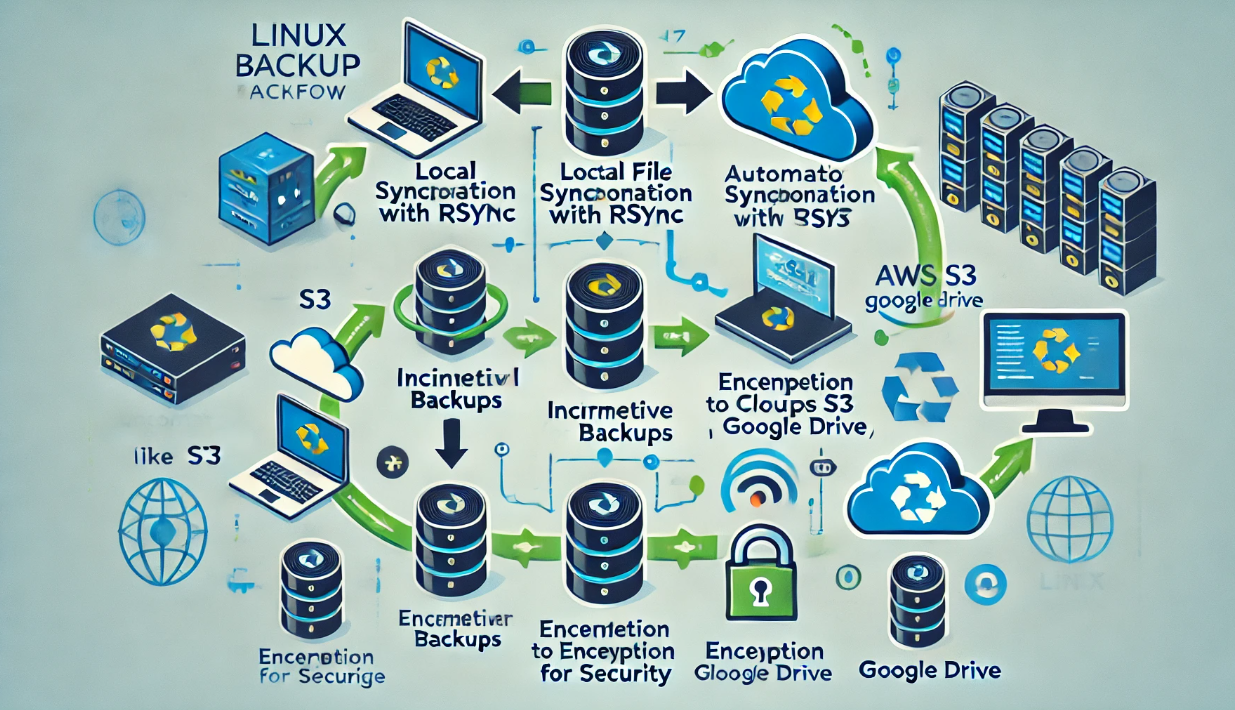Linux Server Backup Strategies: Protecting Your Data the Right Way
Data loss can be catastrophic for businesses and individuals, making a solid backup strategy essential for Linux servers. Whether due to hardware failures, accidental deletions, malware attacks, or system corruption, having reliable backups ensures quick recovery and minimal downtime.
1. Why Linux Server Backups Are Critical
- Hard Drive Failures: Even modern SSDs can fail unexpectedly.
- Human Errors: Accidental deletions and misconfigurations happen.
- Cyber Threats: Ransomware attacks can encrypt your critical files.
- Software Updates Gone Wrong: Some updates break applications or cause data corruption.
A good backup strategy ensures that you can restore your system quickly without losing important data.
2. Types of Linux Server Backups
1. Full Backups
A complete snapshot of your entire system, including files, configurations, and databases.
- ✅ Pros: Best for disaster recovery.
- ❌ Cons: Slow and takes up a lot of storage.
2. Incremental Backups
Only backs up changes made since the last backup.
- ✅ Pros: Fast and efficient, uses less storage.
- ❌ Cons: Requires previous backups to restore completely.
3. Differential Backups
Stores changes made since the last full backup (not the last incremental backup).
- ✅ Pros: Faster than full backups, easier restoration than incremental.
- ❌ Cons: Uses more storage than incremental backups.
4. Snapshot Backups
Uses filesystem snapshots (e.g., LVM snapshots, Btrfs, ZFS snapshots) to capture system state instantly.
- ✅ Pros: Very fast, ideal for quick rollbacks.
- ❌ Cons: Can’t replace offsite backups; relies on the same disk.
3. Best Linux Server Backup Tools
1. Rsync (Local & Remote Backups)
Best For: Fast file backups and synchronization
Uses SSH to securely sync files between servers
rsync -avz --delete /source_directory/ user@remote-server:/backup_directory/
2. Bacula (Enterprise-Grade Backup Solution)
Best For: Large-scale server environments
sudo apt install bacula-server bacula-client -y
3. Timeshift (Best for System Snapshots)
Best For: Desktop and server snapshot backups
sudo apt install timeshift -y
4. Duplicity (Encrypted Backups to Remote Storage)
Best For: Secure, remote, and cloud backups
duplicity /home/user file:///mnt/backup
5. BorgBackup (Deduplicated & Compressed Backups)
Best For: Efficient backups with compression & deduplication
sudo apt install borgbackup -y
4. Automating Linux Server Backups
To schedule a daily Rsync backup, edit the cron job:
crontab -e
Add this line to run the backup at 2 AM every day:
0 2 * * * rsync -avz /source_directory/ user@remote-server:/backup_directory/
5. Where Should You Store Your Backups?
| Backup Location | Pros | Cons |
|---|---|---|
| Local Backup (Same Server) | Fast & easy to restore | Useless if the disk fails |
| External Hard Drive | Affordable, quick recovery | Requires manual swapping |
| Remote Server (Rsync, SCP) | Secure & automated | Needs extra setup |
| Cloud Backup (AWS, Google Drive, Backblaze B2) | Offsite & scalable | Monthly costs, requires encryption |
6. Testing Your Backups (Because Backups Can Fail!)
Backups are useless if they don’t work when needed!
tar -tf /path/to/backup.tar.gz
7. Final Thoughts
- ✔ Use incremental + full backups to balance speed & storage.
- ✔ Automate backups using cron jobs.
- ✔ Store backups offsite or in the cloud for added safety.
- ✔ Regularly test and verify your backups.
Don’t wait for disaster to strike—start backing up your Linux server today!

